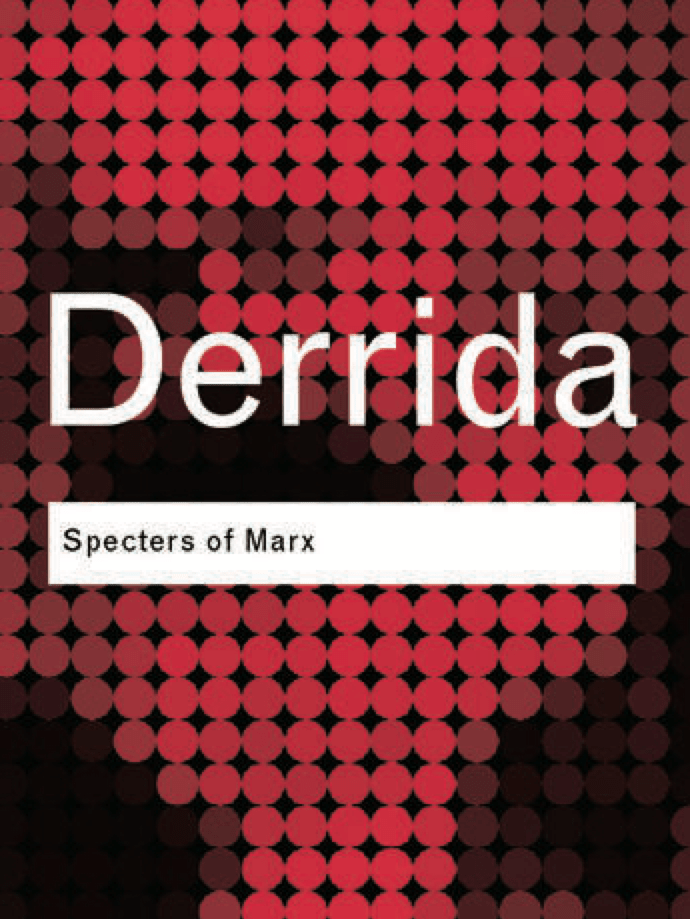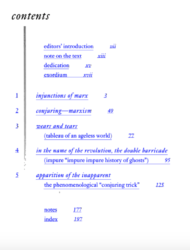In État Présent: Hauntology, Spectres and Phantoms, Calin Davis has reviewed the significance of hauntology in psychoanalytical and critical works and has spotlighted it according to two main sources. The present text beside paying to the Davis’ approach to hauntology in his article, points to the potentials of this approach in connection to the art practices.
‘Hauntology’ as a term was first used by Jacques Derrida in his Specres des Marx (Spectres of Marx, 1993) and he studies it as a conceptual method. Derrida’s rehabilitation of ghosts as a subject of enquiry has proved to be extraordinarily fertile. Hauntology pokes criticisms at ontology’s privilege by opposing the figure of ‘ghost’ against ‘being and presence’ and with preferring the ghost to emphasize something which is neither present nor absent, neither dead nor alive. The word ghost has nothing to do with believing in them or not, but it points to a quality of spectrality. As Fredric Jameson puts it: “The living present is scarcely as self-sufficient as it claims to be; that we would do well not to count on its density and solidity, which might under exceptional circumstance betray us.” So, it clearly focuses on the present time as the main subject; there is something deceiving unlike its disguised face, there is a situation that hides itself from us and there is a status in flux and mixed, but intangible.
The two main sources which Davis considers are respectively the work of psychoanalysts Nicolas Abraham and Maria Torok, and studies by Jacques Derrida. Although Abraham’s and Torok’s work is chronologically prior to Derrida’s, it has been less acknowledged. The interest in Abraham and Torok about hauntology returns to its transgenerational communication: “the way in which the undisclosed traumas of previous generations might disturb the lives of their descendants even and specially if they know nothing about their distant causes.” Abraham and Torok discuss ‘phantom’ (ghost in its general concept) as the presence of a dead ancestor in the living Ego, intent on preventing its traumatic and usually shameful secrets from coming to light. Therefore, the return of phantom, not as commonly believed, is to deliver a message or reveal a secret, just to the contrary, it is a liar who comes to deceive the haunted person.
The phantom in Abraham’s and Torok’s theory is centered around the secrecy and the hidden. The spectres of Derrida in contrast have nothing in common with phantom. Davis has illustrated some major differences that will be mentioned: The concept of spectres in Derrida’s theory has a deconstructive/post-structuralist approach, it hovers between life and death, presence and absence, and makes established certainties vacillate. In fact, Derrida invites us to speak and listen to the spectre contrary to the prevalent intellectual traditions. Not as Abraham and Torok argue, conversing with spectres does not necessarily reveal a shameful secret or etc., “Rather, it may open us up to the experience of secrecy as such: an essential unknowing which underlies and may undermine what we think we know.” Thus, for Derrida, the spectres’ secret is not a definite meaning to be uncovered, but it is a productive opening. According to Abraham and Torok, the phantom’s secrets should be detected so that it is dispelled, whereas for Derrida it is an ethical prohibition not to reduce the spectre to an object of knowledge. Acting based on Abraham’s and Torok’s methodology and due to uncovering of the occulted meaning, one is putting end to interpretation, whereas Derrida’s spectres point to an unformulated future—to understand and channel to something which is beyond our knowing.
But it cannot be doubted that the most distinguishing difference between these two strands in hauntology goes to the “status of the secret.” The secrets of Abraham’s and Torok’s lying phantoms, despite their ability of being spoken, are unspeakable as they are subjects of shame and prohibition. But for Derrida, the ghost and its secrets are unspeakable in another manner. Abraham’s and Torok’s attempt is to return ghost to an order of knowledge whereas Derrida is against such returning, and instead, emphasize encounter with the strange, unheard and “other”: “For Derrida, the ghost’s secret is not a puzzle to be solved; it is the structural openness or address directed towards the living by the voices of the past or the not yet formulated possibilities of the future. The secret is not unspeakable because it is taboo, but because it cannot not (yet) be articulated in the languages available to us. The ghost pushes at the boundaries of language and thought. The interest here, then, is not in secrets, understood as puzzles to be resolved, but in secrecy.”
The works of art also pay to the vague and intangible dimension of the life, or at least they claim to. The artist transfers something through their work which is merely a result of a personal experience or it is only the artist who has expressed it in that special manner. In art we are thus dealing with such qualities as being occult, specific, inventional, ambiguous and enchanting. That means the world to the artist is like the work of art to the audience, both conveying a message to be encountered and uncovered. Therefore, the artist (and their audience) finds themselves as discoverers who are either exulted by their discovery or patiently, by confirming the situation and being connected to the occult, come across a more comprehensive question: “What is the significance of obscurity?”
Hauntology, especially in its Derridean strand, in fact puts the emphasis on the obscure status. The spectre shadows, is a non-existent whose effects give it an in-between identity, has a patchwork durability, is permanent but drops in, a reminiscence toward past/future, a cautionary, encouraging and preventive. That is why Fredric Jameson considers the living present an unsecure experience; because of not being self-sufficient and being in conversation with the complex layers of the time. We live at the present moment without the past and future behind us or in front; nothing moves in a straight way, everything is intertwined and the reception of the time as an all-covering reality is to disregard the role of the past and future in shaping the concepts—this is the very betrayal by the living present.
Abraham’s and Torok’s approach toward ghost, which is criticized by Derrida’s spectres, is subject of the same criticisms when transforms into the artist’s practice. That is, the insertion of the traumas of the past between the skins of the artworks for the audience (/critic and expert) to be uncovered, is similarly a psychoanalytic method. The charm about it is in the process and arriving at the root—revealing the prohibited secrets and making aware of them. The role played by the ghost is merely to hide the secrets. In Derrida’s hauntological method, in contrast, the role of the ghost is spectral, it does not delude, it is suggestive and reminiscent. The work of art is not the source of secrets but itself is a part of it. The haunted work makes us to experience (not interpret) the occult aspects in a post-structuralist fashion—“listening to the spectres” and acknowledging the presence of the signs. Such relative quality results in the self-exposure of the knowledge, not as an invention but conception. The works do not inform us about anything, they assist us to enter other possibilities and meanings: “the tension between the desire to understand and the openness to what exceeds knowledge.”
ـــــــــــــــــــــــــ
Davis, Calin. “État Présent: Hauntology, Spectres and Phantoms.” French Studies, Vol. LIX, No. 3, 373–79.
 platform
platform  Hauntology and Delusion of the Living Present
Hauntology and Delusion of the Living Present

